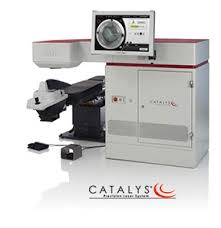What do an orange and cataract have in common?
...Not much.
 Likening a cataract to a piece of fruit, and waiting until it’s “ripe”before you can have surgery might be a catchy phrase. But it’s also outdated medicine.
Likening a cataract to a piece of fruit, and waiting until it’s “ripe”before you can have surgery might be a catchy phrase. But it’s also outdated medicine.
There is nothing quite as frustrating to the accomplished eye surgeon as when a patient presents with dark brown cataracts, because he or she was told to "wait until they're ripe." These cataracts are densely opaque and as hard as dried clay.
Cataracts are removed using techniques that dissolve them before they're vacuumed away. And an advanced cataract requires much more ultrasonic energy. Waiting until a cataract has created significant vision decline often means greater operative risks, a longer post-operative recovery, and increased swelling of the cornea.
Patients who are fearful often make the mistake of waiting until they desperately need cataract surgery, thinking that doing so avoids risks. But actually, the opposite is the case.
The time to consider having today’s no-stitch, no-shot, no-patch cataract surgery is when the cloudiness of your eye’s natural lens reduces the quality of your vision.
By presenting to the eye surgeon when vision decline begins to become symptomatic, the patient usually can expect a shorter and easier cataract surgery.


 Likening a cataract to a piece of fruit, and waiting until it’s “ripe”before you can have surgery might be a catchy phrase. But it’s also outdated medicine.
Likening a cataract to a piece of fruit, and waiting until it’s “ripe”before you can have surgery might be a catchy phrase. But it’s also outdated medicine.











